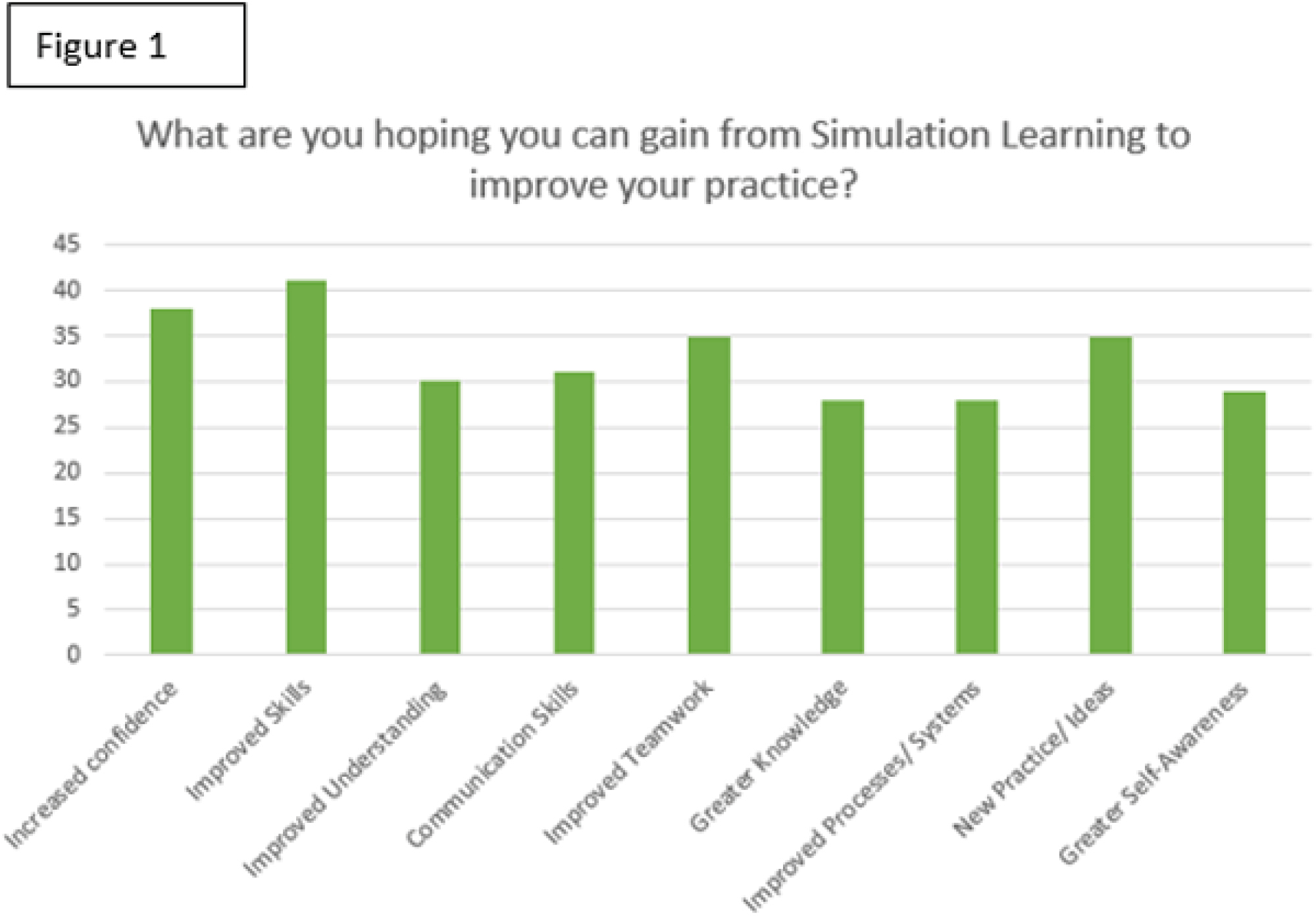
Simulation is widely recognised as a safe, valuable learning modality [1]. However, it is greatly underutilised in End of Life (EoL) care [2] where the majority of learning has been theoretical. A plethora of challenges exist around introducing a simulation programme in a hospice environment, both organisational and psychological [3], including implementing a new idea at a time when healthcare workers are experiencing unprecedented levels of burnout following a pandemic. As part of a one-year project funded by Health Education England, we sought to create and introduce a comprehensive simulation-based programme for rollout across the Hospice with clear benefits and relevant subject matter that engages our wide range of MDTs as well as non-clinical staff.
Posters were used to begin to introduce the concept of simulation. A mixture of questionnaires, interviews and online sessions were held to establish current knowledge and views of staff on simulation-based learning. Time was set aside to thoroughly outline the project and its benefits to teams throughout the Hospice, clinical and non-clinical staff.
Questionnaire results from 52 respondents show that 35% of staff had no knowledge of simulation prior to the information given as part of this project. Despite this, when simulation was explained more clearly, all respondents felt that they would be able to gain something positive from introduction of a simulation-based programme as shown in Figure 1. There was very little in the way of negativity towards the introduction of simulation, with only 1.9% of respondents citing that they felt ‘disinterested’ by the project.


Teams amongst the hospice recognise that simulation provides a valuable learning opportunity. By ensuring understanding of the project, encouraging involvement of all teams, and recognising their unique concerns, thoughts and pressures, it is possible to implement a successful simulation-based programme in the Hospice environment leading to quality improvement in End-of-Life care.
1. Randall DC. Pragmatic children’s nursing: A theory for children and their childhoods. Routledge; 2015.
2. Bassah N, Seymour J, Cox K. A modified systematic review of research evidence about education for pre-registration nurses in palliative care. BMC Palliative Care. 2014;13(1):1–10.
3. Patterson MD, Blike GT, Nadkarni VM. Advances in Patient Safety. Situ Simulation: Challenges and Results. In: Kerm Henriksen, James B. Battles, MA Keyes und ML Grady (Hg.): Advances in Patient Safety. New directions and alternative approaches, 3, p.4. 2008